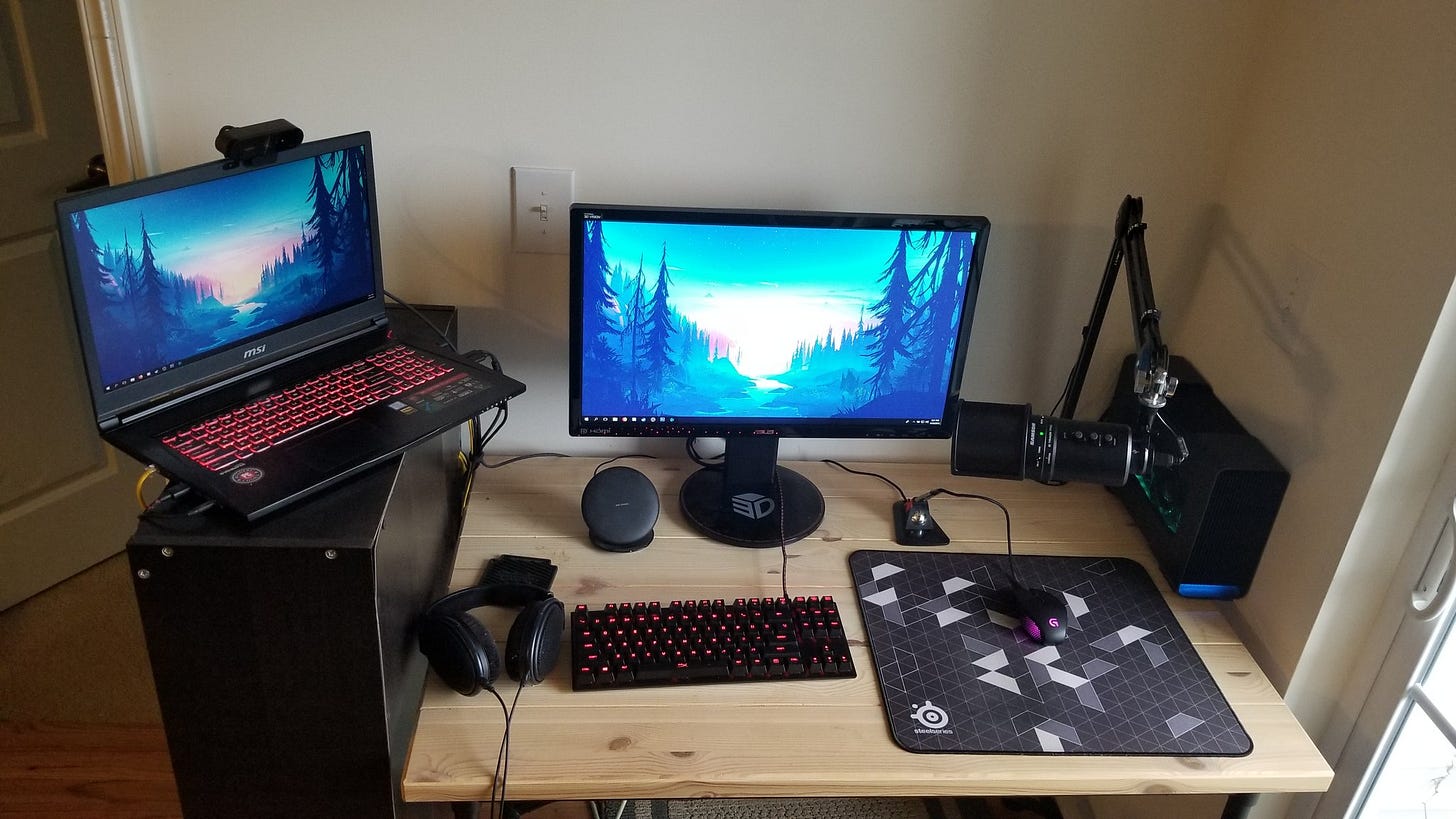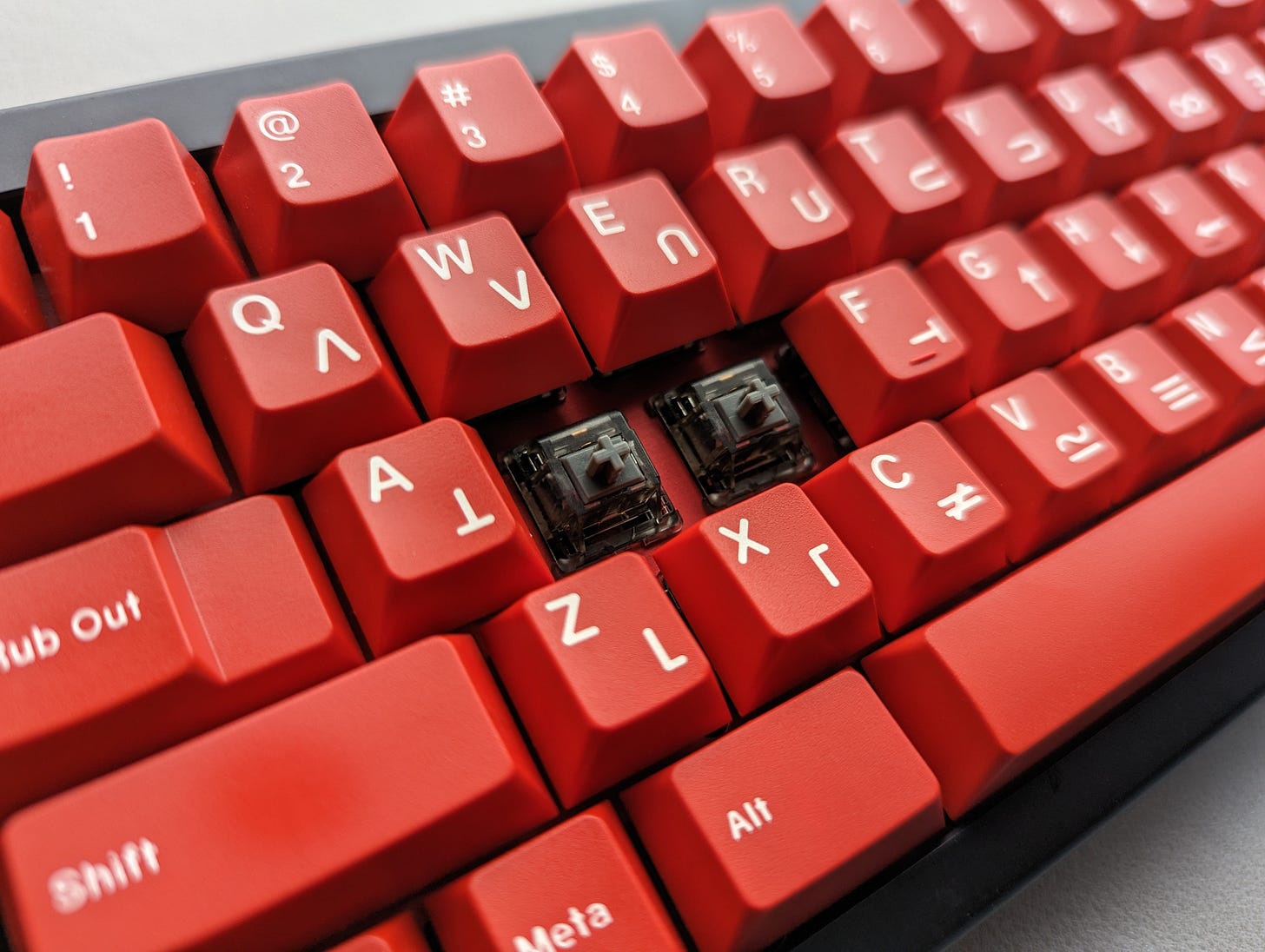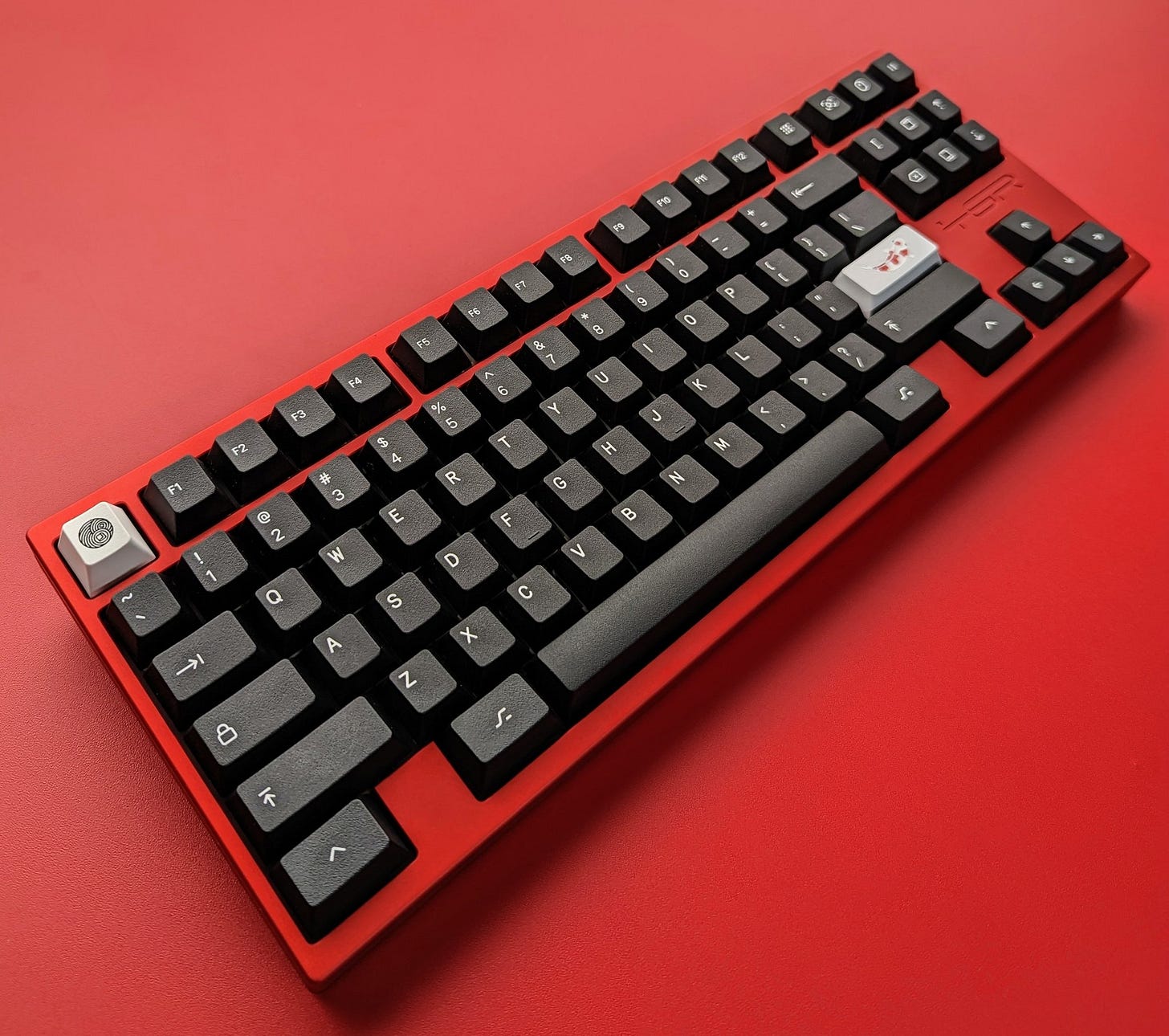First off, I want to start my first post here by saying that I had no idea this would share to people from Twitter. I was fully expecting to mess around for a few weeks, make some test posts, and take some time to feel comfortable. Well, after about 5 minutes from making the “Why I’m starting this page” post I walked to the kitchen in the studio and to my surprise David and Adam said “I subscribed to your substack, are you going to write stuff?”
So yea, thank you for whoever subscribed and I guess I’ve got a real reason to make some posts ASAP!
Anyways, mechanical keyboards are dope. I bought my first after watching Scarra play League of Legends and wondering why his keyboard was so loud. After some research and minimal funds I bought myself a CM Storm Quickfire TK board with brown switches. I loved that thing despite buying the version that only lit up a 1/3 of the keys and on with red lights.
But eventually I wanted to upgrade, so I made the switch to red switches with a HyperX Alloy TKL where I also learned that I enjoyed TKL was an awesome form factor. I then was lucky enough to start using a SteelSeries Apex Pro TKL which for a gaming keyboard felt really amazing at the time. I got to try numerous other gaming keyboards at work that would be sent in and I’d test them out on our gaming setup, but for a while my entire experience on mechanical keyboards were only ones made by gaming companies.
But one day Marques tweeted about using a Keychron and because of that single tweet, we started getting sent more and more keyboards. So lucky me, as these keyboards come in, I get to test them. For a while nothing really caught my eye, but then one day we got a package from KeyCult and inside were 2 BEAUTIFUL keyboards. I’d never heard of them but after looking at their website, I realized very quickly what we were dealing with.
Keycult correctly assumed we had no idea what we were doing when it comes to building a keyboard, so they sent us 2 different No. 2/65 boards that they assembled with switches/keycaps. Right off the bat they were heavy, which I loved. Why do keyboards need to be so light? They’re supported by your desk all the time, you’re never really taking them around with you. This thing was a tank, I loved it.
So I grabbed one of them are started using it for my home setup, which mostly involves playing games. Just holding it next to my Apex Pro made the Steelseries keyboard feel like a toy (it is anything but a toy at 200$) and I basically instantly fell in love with it. The weight was incredible, I find myself pushing on my keyboard as I play competitive games and this held in place. The typing experience was buttery smooth and sounded like heaven. The simple black/red/white color scheme was 🤌. I also really enjoyed the 65% layout style despite losing the ~ key and function row.
The funny thing about my experience with this keyboard though, I’m still not exactly sure what the switches are on here. I’ve looked all over the place, I had the MKBHD Discord dig for me, but I still don’t think I could tell you what they are. They’re tactile, smoke casing, and a darker gray switch. There’s nothing on the casing that would indicate a company (that I can tell), so I can’t for the life of me figure these out. Here’s an image for reference, if anyone knows please let me know!
Anyways, this board is obviously incredible and way too good for me, but I’ve been using it for about a year now and I did use it to win the Fastest Typist video on The Studio channel. After my clutch performance in finals, a company called Monokei reached out and offered to send one of their boards. After a few weeks of waiting a carrying case with a full metal case, PCB, and set of keycaps came in the mail. The red metal case was beautiful and somehow even heavier than the Keycult so I was super excited to try it or at least protect myself from intruders with the 5+ pound slab of metal I now had in my possesion.
Although there was a small issue, it wasn’t assembled and I’ve never built a keyboard before. Luckily we had a pack of Glorious switches, I ordered a pair of Durock stabalizers, and I have a handy iFixit kit so I had everything I needed, just not the time. But then half the team got COVID around Thanksgiving so I was home, bored, and generally locked away in my office, so I built my first keyboard! Thankfully Monokei sent a hotswappable board because I don’t know if I would have felt confident enough to solder on something as nice as this.
So here’s the finished product!
Beautiful, again. Here’s the specs:
Monokei x TGR Jane V2
Monokei White on Black Keycaps
Glorious Panda Switches
Durock V2 Screw in Stabalizers
This board is awesome, it’s heavy, the red metallic case pops like no other, and the koi fish keycap they sent is just such a nice little accent for it. I realized I do miss the function row and the Print Screen button a lot, although now I’m constantly hitting the wrong button for the ESC key after using the 65% for so long. The switches are pre-lubed and feel great with a really satisfying bump when you’re using them.
I had an absolute blast building this board, but as I use it I realize that there’s definitely a lot of small details that being my first build missed that make this board vs the Keycult have a different typing experience. And this difference is clearly through the fault of my own through inexperience vs the people at Keycult who built us the boards in full.
Ultimately, through my experience with these, my goal is to learn how to lube switches/stabs myself and add a few more finishing touches to the Monokei and get the full build experience. I might wind up doing it on stream someday when I get some time.
But, all in all, that’s why I now have 2 keyboards that are way too nice for me, but because of them I’m genuinely enjoying keyboard content more and more and would love to try my hand at building some more in the future.
One of the main reasons I made this page is because I love to test out peripherals for gaming, and while these are well out of the wheelhouse for most people who game, having some experience on the top echelon of keyboards hopefully will help me see some of the flaws keyboards have when they’re focused more towards gamers. We’re seeing more and more companies like Glorious and Higround mesh gaming + enthusiast keyboards together which is awesome and feels like it gives people options to make their setups far more than just some crazy RGB.








As someone who doesn't like reading very much AND has generally 0 knowledge in keyboards I'm (positively) surprised how I actually enjoyed this! It's Well written & interesting. Can't wait for more content like this!